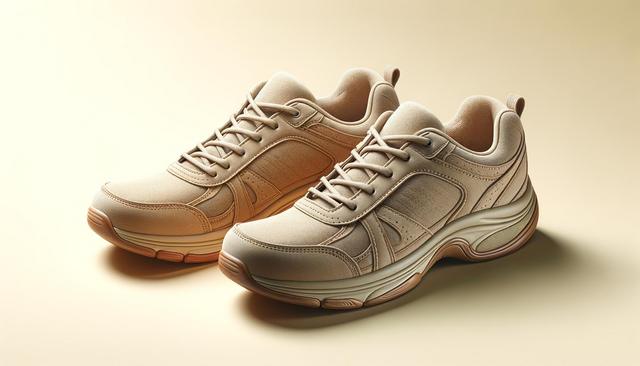The Role of Orthopedic Shoes in Supporting Foot and Joint Health
Understanding how orthopedic shoes support foot and joint health begins with recognizing the biomechanical design behind them. These shoes are specifically engineered to provide additional arch support, cushioning, and stability, which can help reduce the pressure on joints and ensure better alignment of the body. For individuals experiencing chronic pain in the feet, knees, or back, orthopedic footwear can offer a noticeable improvement in daily comfort and mobility.
Orthopedic shoes help to absorb shock and reduce the strain on ligaments and tendons. They are often equipped with features such as:
- Contoured footbeds that support natural foot alignment
- Extra depth to accommodate custom orthotics
- Firm heel counters for added stability
- Wide toe boxes to reduce pressure on the toes
These features can be particularly valuable for those with joint conditions such as arthritis or plantar fasciitis, as they minimize discomfort during walking or standing. By promoting a healthier walking pattern, these shoes not only support the feet but also alleviate stress on the hips and spine.
Common Foot Conditions That Benefit from Orthopedic Footwear
There are several foot conditions that benefit from orthopedic footwear, making them a practical investment for many people. From mild discomfort to more serious medical issues, orthopedic shoes can be a helpful solution for a wide range of needs. Conditions that often see improvement with the use of orthopedic shoes include:
- Plantar fasciitis
- Flat feet or fallen arches
- Bunions
- Hammertoes
- Diabetic neuropathy
- Heel spurs
Each of these conditions can cause pain and difficulty when walking, especially when wearing standard footwear that lacks adequate support. Orthopedic designs address these issues by redistributing pressure and providing tailored cushioning where it’s most needed. In particular, diabetic users may find orthopedic shoes essential in preventing ulcers and protecting sensitive areas of the foot from injury.
By reducing irritation and offering a custom fit, these shoes help maintain skin integrity and overall foot health, especially important for individuals with reduced circulation or nerve sensitivity.
How to Choose the Right Pair for Everyday Use
Knowing how to choose the right pair for everyday use involves more than just selecting the right size. Orthopedic shoes come in a wide variety of styles, so it’s essential to consider both your health needs and lifestyle. Begin by consulting a healthcare provider or podiatrist to assess your specific requirements. They may recommend a particular type of support or a custom insole.
When shopping for orthopedic shoes, keep the following tips in mind:
- Look for shoes with removable insoles to allow for custom orthotics
- Ensure the shoe provides ample arch and heel support
- Choose breathable materials to prevent overheating and moisture buildup
- Try shoes on later in the day when your feet are more swollen for a better fit
- Walk around in the shoes to test comfort and stability
Comfort should be immediate—well-designed orthopedic shoes don’t require a long break-in period. If you’re particularly active or on your feet often, look for styles made for active and senior users. These designs typically offer added shock absorption and slip-resistant soles to support safe movement.
Trusted Brands with Comfort Focused Designs
While brand names aren’t mentioned here, there are many trusted brands with comfort focused designs that specialize in orthopedic footwear. These companies often work alongside medical professionals to create shoes that combine clinical support with modern aesthetics. Many of these brands offer diverse options, from athletic to dress shoes, so users don’t have to compromise on style to achieve comfort.
Features commonly found in these comfort-oriented designs include:
- Gel or memory foam footbeds for adaptive cushioning
- Adjustable closures such as hook-and-loop straps or elastic laces
- Lightweight yet durable soles to reduce fatigue
These elements work together to create a functional shoe that meets both medical and personal comfort needs. Reviews from users often highlight the long-term durability and improved quality of life they experience after switching to orthopedic options. For those hesitant about the initial cost, some orthopedic shoes with payment plan options make it easier to invest in better foot health without facing financial strain.
Styles Made for Active and Senior Users
Orthopedic footwear isn’t limited to bulky or unattractive designs. Today, there are many styles made for active and senior users that offer both support and visual appeal. These shoes are designed with mobility and safety in mind, helping reduce the risk of slips, trips, and falls—especially important for older adults who may have balance or stability concerns.
For active individuals, orthopedic sneakers and walking shoes provide the right blend of flexibility and support. They often feature:
- Shock-absorbing midsoles for joint protection
- Non-slip outsoles for traction on different surfaces
- Breathable mesh uppers for comfort during long periods of use
For senior users, comfort and ease of use are key. Look for shoes with wider openings, easy closures, and padded interiors. These features make it easier to put on and take off shoes without discomfort or assistance. As needs evolve, orthopedic options can adapt with them, offering choices that prioritize wellness without sacrificing convenience or design.
Conclusion: Investing in Long-Term Foot Health
Orthopedic shoes offer a valuable combination of comfort, function, and support, making them a wise choice for individuals dealing with chronic foot conditions or simply seeking better everyday footwear. Whether you’re managing a specific ailment or looking to prevent future issues, understanding how orthopedic shoes support foot and joint health can guide you toward smarter purchasing decisions. With options available for various lifestyles and foot types, including styles made for active and senior users, it’s easier than ever to find a pair that suits your needs. By considering how to choose the right pair for everyday use and exploring orthopedic shoes with payment plan options, you can take a practical step toward better mobility and overall well-being.




Leave a Reply